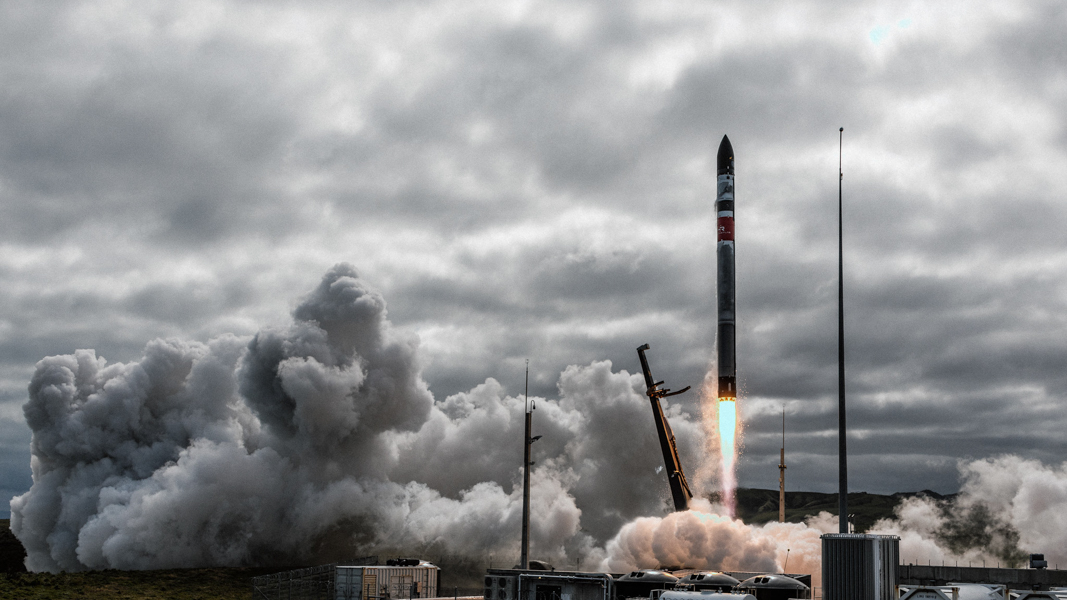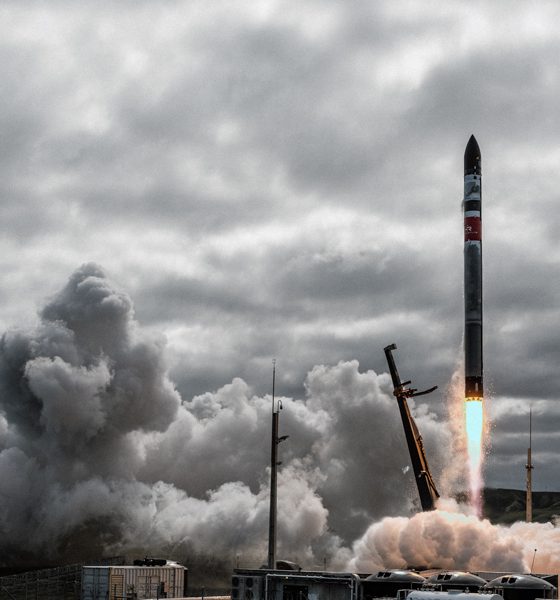

News
Rocket Lab prepares for return to flight with The Moon God Awakens mission
Rocket Lab is currently targeting no earlier than December 13th for the launch of the mission, The Moon God Awakens from the Mahia Peninsula in New Zealand.
The company is in the midst of its return to flight following the mishap that occurred during its prior launch in September 2023.
Payload integration is complete for our 42nd Electron launch!
We’ve got a final step to clear before launch day – completing a wet dress rehearsal to confirm all systems are ready for lift-off. As such, we’re currently targeting no earlier than 13 Dec NZT for the launch of The… pic.twitter.com/0dz60wkxrw
— Rocket Lab (@RocketLab) November 26, 2023
Most recently, they announced that they have integrated the payload from iQPS onto their payload adapter, which will also utilize Rocket Lab’s Mark II Motorized Lightband as the separation method from the kickstage.
The payload from iQPS is a synthetic-aperture radar (SAR) satellite named TSUKUYOMI-I. The satellite will be launched into a 42-degree orbital inclination. Currently, iQPS has one other SAR satellite in orbit, but this will be the 2nd of a planned 36 satellite constellation to be launched. The satellites will be capable of snapping a photo of specific points around the planet roughly every 10 minutes.
As for Rocket Lab, which recently released its Q3 financial results, it revealed the cause of the issue that resulted in the loss of the last mission. With the 1.6 seconds of data they gathered before communication was lost with the 2nd stage of Electron, the company was able to determine an electrical arc cut power to the battery packs in an incredibly rare set of conditions where an arc can form in a vacuum.
Rocket Lab has made its corrective changes and is moving towards its 10th flight of the year and 42nd mission overall. As of this writing, they are not planning to recover the first stage. If this launch gets off the ground successfully, it’ll be the most launches in one calendar year for the company.
Disclosure: Richard Angle is not an RKLB shareholder.
Questions or comments? How do you think Rocket Lab will do in 2024? Shoot me an email at rangle@teslarati.com, or Tweet me @RDAnglePhoto.

News
Tesla starts showing how FSD will change lives in Europe
Local officials tested the system on narrow country roads and were impressed by FSD’s smooth, human-like driving, with some calling the service a game-changer for everyday life in areas that are far from urban centers.

Tesla has launched Europe’s first public shuttle service using Full Self-Driving (Supervised) in the rural Eifelkreis Bitburg-Prüm region of Germany, demonstrating how the technology can restore independence and mobility for people who struggle with limited transport options.
Local officials tested the system on narrow country roads and were impressed by FSD’s smooth, human-like driving, with some calling the service a game-changer for everyday life in areas that are far from urban centers.
Officials see real impact on rural residents
Arzfeld Mayor Johannes Kuhl and District Administrator Andreas Kruppert personally tested the Tesla shuttle service. This allowed them to see just how well FSD navigated winding lanes and rural roads confidently. Kruppert said, “Autonomous driving sounds like science fiction to many, but we simply see here that it works totally well in rural regions too.” Kuhl, for his part, also noted that FSD “feels like a very experienced driver.”
The pilot complements the area’s “Citizen Bus” program, which provides on-demand rides for elderly residents who can no longer drive themselves. Tesla Europe shared a video of a demonstration of the service, highlighting how FSD gives people their freedom back, even in places where public transport is not as prevalent.
What the Ministry for Economic Affairs and Transport says
Rhineland-Palatinate’s Minister Daniela Schmitt supported the project, praising the collaboration that made this “first of its kind in Europe” possible. As per the ministry, the rural rollout for the service shows FSD’s potential beyond major cities, and it delivers tangible benefits like grocery runs, doctor visits, and social connections for isolated residents.
“Reliable and flexible mobility is especially vital in rural areas. With the launch of a shuttle service using self-driving vehicles (FSD supervised) by Tesla in the Eifelkreis Bitburg-Prüm, an innovative pilot project is now getting underway that complements local community bus services. It is the first project of its kind in Europe.
“The result is a real gain for rural mobility: greater accessibility, more flexibility and tangible benefits for everyday life. A strong signal for innovation, cooperation and future-oriented mobility beyond urban centers,” the ministry wrote in a LinkedIn post.
News
Tesla China quietly posts Robotaxi-related job listing
Tesla China is currently seeking a Low Voltage Electrical Engineer to work on circuit board design for the company’s autonomous vehicles.

Tesla has posted a new job listing in Shanghai explicitly tied to its Robotaxi program, fueling speculation that the company is preparing to launch its dedicated autonomous ride-hailing service in China.
As noted in the listing, Tesla China is currently seeking a Low Voltage Electrical Engineer to work on circuit board design for the company’s autonomous vehicles.
Robotaxi-specific role
The listing, which was shared on social media platform X by industry watcher @tslaming, suggested that Tesla China is looking to fill the role urgently. The job listing itself specifically mentions that the person hired for the role will be working on the Low Voltage Hardware team, which would design the circuit boards that would serve as the nervous system of the Robotaxi.
Key tasks for the role, as indicated in the job listing, include collaboration with PCB layout, firmware, mechanical, program management, and validation teams, among other responsibilities. The role is based in Shanghai.
China Robotaxi launch
China represents a massive potential market for robotaxis, with its dense urban centers and supportive policies in select cities. Tesla has limited permission to roll out FSD in the country, though despite this, its vehicles have been hailed as among the best in the market when it comes to autonomous features. So far, at least, it appears that China supports Tesla’s FSD and Robotaxi rollout.
This was hinted at in November, when Tesla brought the Cybercab to the 8th China International Import Expo (CIIE) in Shanghai, marking the first time that the autonomous two-seater was brought to the Asia-Pacific region. The vehicle, despite not having a release date in China, received a significant amount of interest among the event’s attendees.
Elon Musk
Elon Musk and Tesla AI Director share insights after empty driver seat Robotaxi rides
The executives’ unoccupied tests hint at the rapid progress of Tesla’s unsupervised Robotaxi efforts.

Tesla CEO Elon Musk and AI Director Ashok Elluswamy celebrated Christmas Eve by sharing personal experiences with Robotaxi vehicles that had no safety monitor or occupant in the driver’s seat. Musk described the system’s “perfect driving” around Austin, while Elluswamy posted video from the back seat, calling it “an amazing experience.”
The executives’ unoccupied tests hint at the rapid progress of Tesla’s unsupervised Robotaxi efforts.
Elon and Ashok’s firsthand Robotaxi insights
Prior to Musk and the Tesla AI Director’s posts, sightings of unmanned Teslas navigating public roads were widely shared on social media. One such vehicle was spotted in Austin, Texas, which Elon Musk acknowleged by stating that “Testing is underway with no occupants in the car.”
Based on his Christmas Eve post, Musk seemed to have tested an unmanned Tesla himself. “A Tesla with no safety monitor in the car and me sitting in the passenger seat took me all around Austin on Sunday with perfect driving,” Musk wrote in his post.
Elluswamy responded with a 2-minute video showing himself in the rear of an unmanned Tesla. The video featured the vehicle’s empty front seats, as well as its smooth handling through real-world traffic. He captioned his video with the words, “It’s an amazing experience!”
Towards Unsupervised operations
During an xAI Hackathon earlier this month, Elon Musk mentioned that Tesla owed be removing Safety Monitors from its Robotaxis in Austin in just three weeks. “Unsupervised is pretty much solved at this point. So there will be Tesla Robotaxis operating in Austin with no one in them. Not even anyone in the passenger seat in about three weeks,” he said. Musk echoed similar estimates at the 2025 Annual Shareholder Meeting and the Q3 2025 earnings call.
Considering the insights that were posted Musk and Elluswamy, it does appear that Tesla is working hard towards operating its Robotaxis with no safety monitors. This is quite impressive considering that the service was launched just earlier this year.








